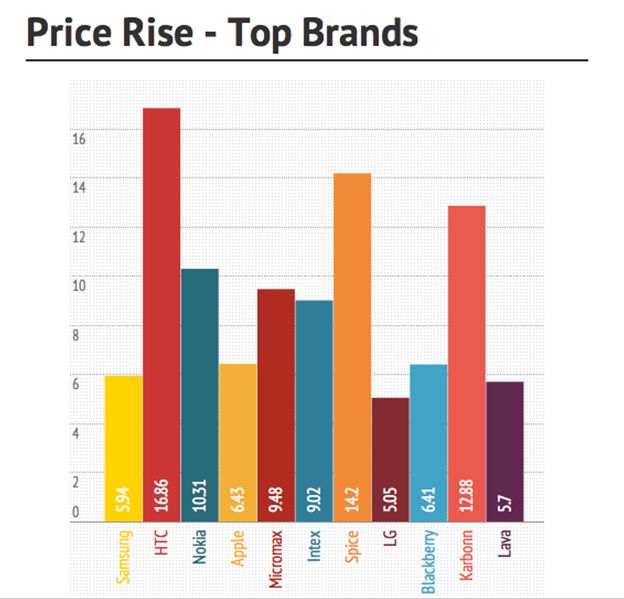Five years ago, launching a decent streaming platform took millions. Now? A teenager with a laptop can build something that reaches millions. That shift…
Apple’s iPhone 5S: great execution wins the spec-sheet war


I am not going to bore you with the publicly known facts about the iPhone 5S, just the interesting bits that make Apple’s belief about great execution more important than winning the hardware war.
Desktop-class performance
The most interesting bit about the iPhone 5S lies in its new processor dubbed the A7. I think Apple didn’t brag much about its success in bringing the first 64-bit processor into a smartphone — although many blogs pointed out that the move to 64-bit architecture would be concerning to the RAM. 32-bit architecture-based CPUs can only address a maximum of 4GB RAM, but it is much more than that. On average, Apple takes two years to double the amount of RAM in its iDevices. Based on this, it would not be wrong to say that it will be at least four years from now when Apple will need more than 4GB RAM in its iDevices.
There was a rumour early this year that Apple wants to move away from Intel’s x86-x64 architecture for its Macs. Turns out that the company already started executing its plan with the introduction of the A7 processor. CEO Tim Cook described it as being “Desktop-class performance” — although that means a performance range closer to the Intel Core 2 Duo processors. According to AnandTech’s review, this is pretty accurate.
The A7 comprises of two ARM v8 architecture-based CPU cores with both 32-bit and 64-bit compatibility — Apple is the first to do this. Apple has also moved to a completely new GPU series from Imagination Technologies dubbed the “Rogue” or PowerVR G6xxx series. From the early reviews, it appears that the GPU is one of the best in its class leading to a performance nearly defeating the Adreno 330 from Qualcomm and matching the new Mali-6xx series from ARM itself. The CPU cores perform better than the Krait 400 cores from Qualcomm and are only slightly slower than the BayTrail (64-bit) cores from Intel.
On average, there is around a 25% improvement in data compression/de-compression as well as image processing, but a staggering amount of more than seven to eight times improvement in processes such as SHA and AES encryption, thanks to hardware acceleration support for this kind of task in ARM v8. This is a significant step-up in terms of performance.
This new processor will most probably be used in the upcoming iPad (fifth gen) and the long-rumoured Apple TV set/set-top box.
Finger print security: not the first, but well-executed
The next important bit is security and Apple went to the next step in the iPhone 5S by introducing the fingerprint sensor beneath the home button. This is not the first time a smartphone has come with a built-in fingerprint reader. Remember the Motorola Atrix? That came with a finger-print sensor too, but it was too slow and half of the time it struggled to recognise the fingerprint as expected.
This new type of sensor can not only read in any orientation, but can also detect if someone has chopped off your finger to use it to unlock your iPhone 5S. Apple uses a capacitive sensor with a metal ring around it which touches your finger to form a complete capacitive system. So it is not possible to unlock the phone without touching the metal ring. While scanning the finger, sub-epidermal layers are scanned and needs electricity flowing through the lovely human skin or it is rendered useless with dead cells (or chopped off fingers). Also, the sensor gets better with time, learning all the parts of your finger. A user can register up to five fingers at once so that’s either your multiple fingers, or you can allow your friends and family to unlock it, if you want.
8MP iSight camera: larger pixels = better image quality
Nokia and Sony are still trying to win the megapixel war, but in a slightly different way to achieve better results. The likes of HTC and Apple are abandoning the megapixel race. Apple has equipped the iPhone 5S with a 20% larger camera sensor than the iPhone 5 yet it is limited to the older 8MP resolution. This means each pixel is now bigger, trying to gather more light information, resulting in clearer and relatively noise-free images. Thanks to the powerful SoC, the iPhone 5S can shoot images and videos much faster. Videos can even be shot at 120FPS (frames per second), which can then be played back at 30FPS to get a beautiful slow-motion effect as and when required.


Great products, price an afterthought
When Apple revealed the prices of both the iPhone 5S and iPhone 5C, it firmly reinforced its belief in refusing to make products that skimp on quality to hit a particular price point. But if Apple thinks that it can make a satisfying product like the iPhone 5C or the iPad Mini, at a lower price, it will. The iPhone 5 is now discontinued and replaced by the new iPhone 5C.
So the Apple iPhone 5S price in India should mostly be around Rs.45,000 (US$723, R7230) which is almost a six percent price hike when compared to the launch price of the iPhone 5, even though Apple is already taking a 14% hit to keep the prices stable after a sharp fall of the Indian rupee value.
When one looks at just the spec sheet, the iPhone 5S is miles behind its competitors, be it just the dual-core processor or an 8MP camera. But Apple believes in great execution rather than competing purely on marketing terms, numbers or pricing.

